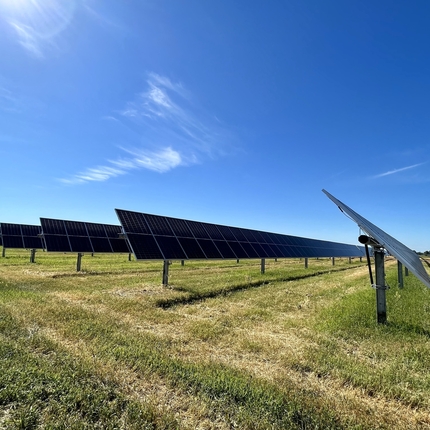Lindsay Mouw, policy associate, [email protected], 402.687.2100, ext. 1028; or Teresa Hoffman, senior communications associate, [email protected], 402.687.2100, ext. 1012
LYONS, NEBRASKA – Solar energy is a rapidly emerging industry in Nebraska and the opportunity for the growth of large-scale solar developments is forecasted to increase considerably in the coming years.
With the expected growth, county officials will be presented with development opportunities. The Center for Rural Affairs has released a new resource to assist counties as they consider or update solar regulations.
“It’s important for counties who are presented with large-scale development opportunities to develop well-drafted regulations addressing where systems can be built to preserve the safety and interests of the county and its residents while upholding private property rights and allowing for cost-effective project development,” said Lindsay Mouw, a Center policy associate and author of “Nebraska Solar Siting Guide: A Roadmap for Counties.”
The guide focuses on practices for utility-scale solar—systems above a certain capacity that are intended to produce electricity to sell into the market. It also includes information related to community solar projects— systems developed by a municipality, utility, or other third parties that typically allows community members to subscribe to the project.
Nebraska’s first utility-scale solar project—in Lincoln— went online in 2016. With more projects in development, a handful of Nebraska counties have already adopted solar regulations and have seen utility-scale development.
In developing the guide, the Center reviewed those and other existing Nebraska regulations, along with best practices from neighboring states, to identify specific provisions local officials can use as a road map for their own. The report contains information on application requirements and the approval process, setbacks guidelines, operations and maintenance planning, infrastructure and road use agreements, and decommissioning and site restoration.
The guide also stresses the importance of public participation and offers recommendations on getting residents involved.
“Community engagement is crucial for the successful development of solar energy regulations,” Mouw said. “Public participation builds trust with local residents, provides an opportunity to address concerns, and increases shared support for the regulations.”
Mouw added that it’s important to remember that zoning be designed for the purpose of promoting the health, safety, morals, convenience, order, prosperity, and welfare of present and future residents.
To learn more, view and download “Nebraska Solar Siting Guide: A Roadmap for Counties” at cfra.org/publications/nebraska-solar-siting-guide-roadmap-counties.





